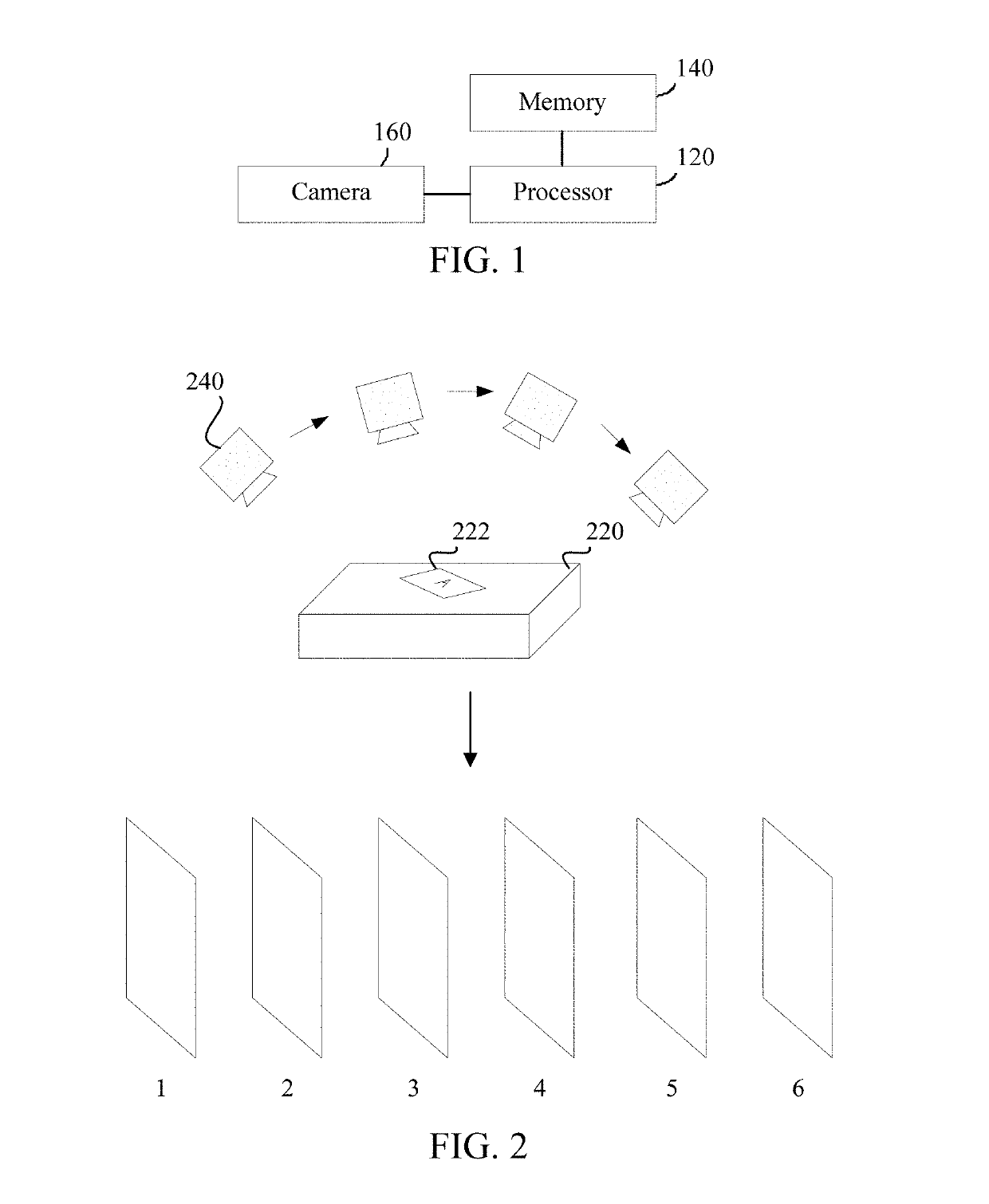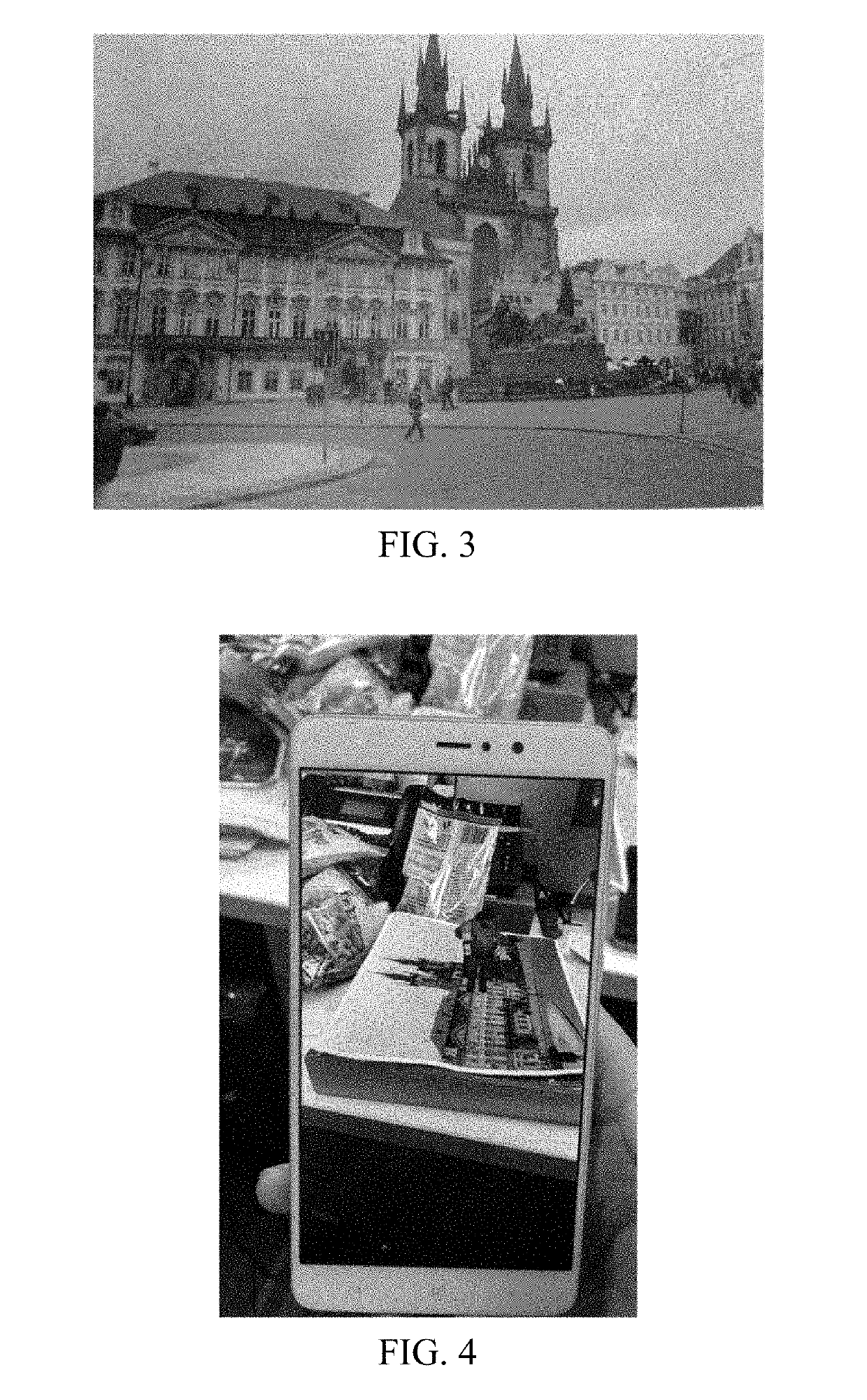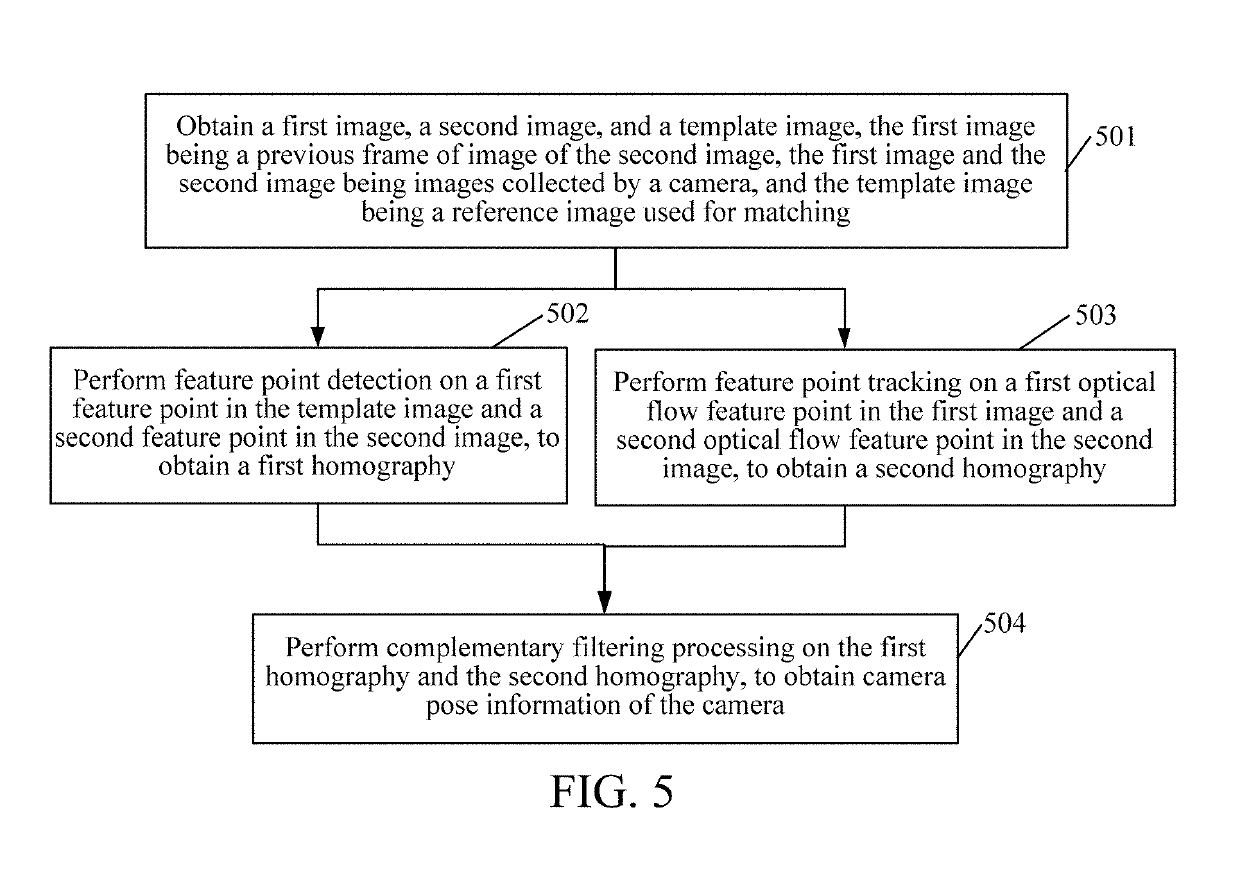Method, device and storage medium for determining camera posture information
a technology of information and camera posture, applied in the field of computer technologies, can solve the problems of affecting the running efficiency and relatively low precision of information, and achieve the effects of low precision, fast optical flow speed and slow speed
- Summary
- Abstract
- Description
- Claims
- Application Information
AI Technical Summary
Benefits of technology
Problems solved by technology
Method used
Image
Examples
first embodiment
[0127]Optionally, on the basis of the first embodiment corresponding to FIG. 7, in a second optional embodiment of the method for determining camera pose information according to the embodiments of this application, the template image corresponds to a plurality of grids arranged in arrays; and
[0128]the performing feature point detection on a first feature point in the template image and a second feature point in the second image, to obtain a first homography includes:
[0129]matching the first feature point in the template image with the second feature point in the second image, and determining a set of feature point pairs in each target grid of the plurality of grids, the feature point pair including: a first feature point located in the target grid, and a feature point that is in the second feature point and that has the largest matching degree with the first feature point; and
[0130]calculating the first homography between the template image and the second image according to the fea...
third embodiment
[0145]Optionally, on the basis of the third embodiment corresponding to FIG. 7, in a fourth optional embodiment of the method for determining camera pose information according to the embodiments of this application, the determining the second homography according to the first target homography and the second target homography may include:
[0146]obtaining the second target homography from the template image to the first image; and
[0147]calculating the second homography from the second image to the template image according to the first target homography and the second target homography.
[0148]In this embodiment, in the process for the apparatus for determining camera pose information to determine the second homography or before the apparatus determines the second homography, a third optical flow feature point needs to be obtained in the template image, then, a matching point of the template image and the first image is found according to the third optical flow feature point and the firs...
seventh embodiment
[0160]The process for transforming a homography into a rotation and translation matrix may be understood as a process for transforming two-dimensional coordinates to three-dimensional coordinates. For the specific implementation, reference may be made to a seventh embodiment corresponding to FIG. 7. After the three-dimensional coordinates are obtained, the position of the camera in the real world when the camera collects the template image may be determined.
[0161]It may be understood that, for the apparatus for determining camera pose information, the time-consuming part is mainly on the detection. For a frame of image, it costs less than 10 ms at most for a tracker to track the frame of image, and it costs nearly 30 ms for a detector to detect the frame of image. Therefore, another alternative solution is fusing the first rotation and translation matrix and the second rotation and translation matrix instead of detection on each frame. Instead, detection and fusion of each frame are...
PUM
 Login to View More
Login to View More Abstract
Description
Claims
Application Information
 Login to View More
Login to View More - R&D
- Intellectual Property
- Life Sciences
- Materials
- Tech Scout
- Unparalleled Data Quality
- Higher Quality Content
- 60% Fewer Hallucinations
Browse by: Latest US Patents, China's latest patents, Technical Efficacy Thesaurus, Application Domain, Technology Topic, Popular Technical Reports.
© 2025 PatSnap. All rights reserved.Legal|Privacy policy|Modern Slavery Act Transparency Statement|Sitemap|About US| Contact US: help@patsnap.com



